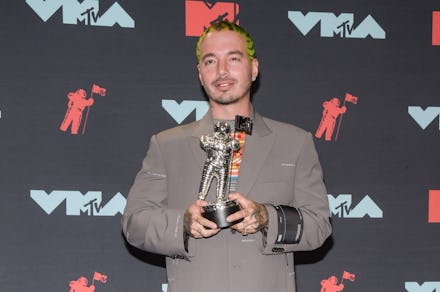How the VMAs are selling Spanish-speaking artists short

Every year, awards shows such as the Video Music Awards aim to curate entertaining, watchable TV featuring some of the world’s biggest stars. Awards shows are — if nothing else — a constant attempt at staying culturally relevant and a good way to do that is to include personalities that appeal to a diverse audience. Artists like Bad Bunny, J Balvin, Ozuna, Anitta, Maluma, Daddy Yankee, and Cencho have been at sitting at the top of Youtube and Spotify global streaming charts for the past few years since a whopping 11 of the top 50 global songs on Spotify are in Spanish.
For the VMAs, the best way to engage these musicians’ legions of fans (including myself) was to create a category called “Best Latin.” In the most literal sense, describing the nominees as “Latin” is technically accurate — they speak a language derived from the Roman Empire’s Latin — but it also flattens all Spanish-language music down to a single category.
And that’s a problem. There are countless genres of Latin American and Caribbean music that fall outside of the most mainstream — even if many haven’t made it to the American masses the way Reggaeton has during the last decade. Dembow, Bachata, Soca, Salsa: These are all genres that influenced American artists we love and that have experienced their own massive global successes.
Additionally, “Best Latin” is vague enough to include artists who aren’t from Latin America — genre chameleons from Spain who sometimes benefit from the cultural exports of a different continent. Enrique Iglesias, for example, was nominated in 2010, for the dance song “Tonight I’m Lovin’ You” featuring Ludacris and DJ Frank E. The track doesn’t have any definable “Latin” characteristics, other than it was sung by Iglesias, who is from Spain. A later version of the song featured Pitbull, who is Cuban-American, but that was not the version nominated for the VMAs.
Perhaps the easiest and most recent example of the murky definition of “Best Latin” is Rosalía, a Flamenco performer from Barcelona, Spain who shared last night’s win with J Balvin and El Guincho for the very Reggaeton “Con Altura.” Rosalía has been criticized in the past for adopting the aesthetics and labeling of a Latina performer — even Bad Bunny ribbed her for her Spanish roots in their Interview Mag piece.
Of course, there’s no beef with Rosalía’s ethnic identity, and the subject of her camouflaging as Latina is a larger and more complex conversation. But is a problem that when Spanish-language music is considered by a major American awards program, all of Latinidad is is flattened into a single category that doesn’t reflect who is making the music and where it is coming from.
Then, to further suggest that award shows are not making a sincere effort to include their Latinx (and Spanish) audiences, when presenting the nominees for "Best Latin," French Montana used the moment to discuss the rights of immigrants. Don’t get me wrong — immigrant rights should be discussed frequently, by everyone, but it didn’t feel like the right time since none of the people up for the “Best Latin” award were immigrants.
Selena Gomez and Benny Blanco are Americans. Daddy Yankee, Tainy, Anuel AA, and Bad Bunny are also Americans, from Puerto Rico. Drake and Snow are Canadian. Karol G, J Balvin, and Maluma are Colombian. Rosalia and El Guincho are both from Spain.
The Spanish-speaking community isn’t a monolith and the term “Best Latin” seems to act as a one size fits all segment for the VMAs to toss anything “Spanish” into. An award show that markets itself not only as in-touch with youth culture but a fixture of it should be able to navigate that more gracefully.